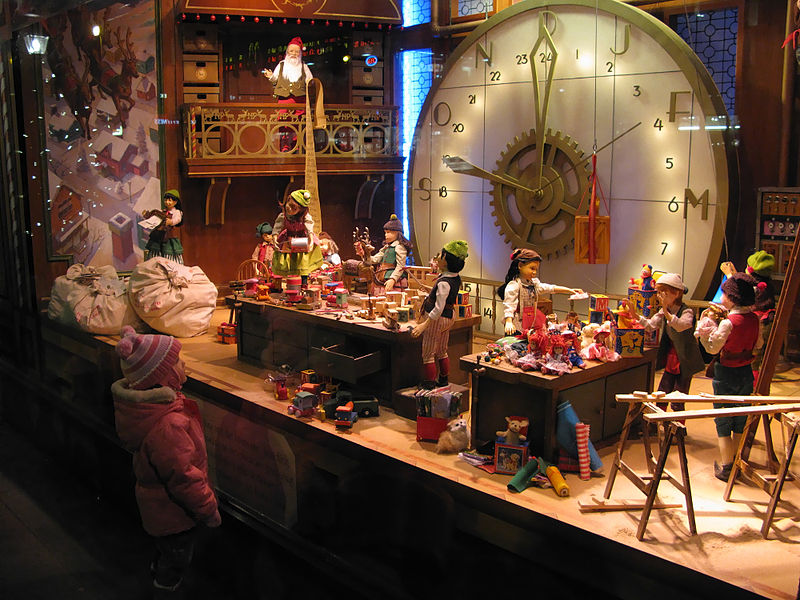By Robert Kurland, republished from the Catholic Writers’ Guild blog.
__
Some 80 years ago when I was a child, I would pester my Jewish parents (secular, non-religious) for a Christmas Tree. All around me would be the lights of Christmas–on houses, lawns, and in the fascinating downtown displays of department store windows–and I didn’t understand why we couldn’t take part in all that. I listened to explanations that we weren’t Christians, we had our own holiday, Chanukkah; but the eight lights of the Menorah didn’t hold a candle (pun intended) to those on any modest Christmas tree, and even though there were eight days of gifts, they were all small potatoes compared to those my Christian friends received on the one day of Christmas.
It took several years after my conversion to the Catholic faith to realize the full import of Christmas. During the first few years after my conversion I still did not feel totally comfortable during the Christmas holidays–more like the hungry tramp peering into the restaurant window, an outsider.
My wife was a cradle Catholic and we celebrated Christmas in a gift giving mode, although she and the children attended Mass. Although we didn’t celebrate Chanukkah, we explained to our cashew children, (Catholic mother, Jewish father), as part of their heritage, what Chanukkah was about (see below).
ABOUT CHANUKKAH (HANUKKAH)¹
“They made new sacred vessels and brought the lampstand, the altar of incense, and the table into the temple. Then they burned incense on the altar and lighted the lamps on the lampstand, and these illuminated the temple. 1 Maccabees 4:49-50 (NAB)
How does light enter into the Chanukkah celebration? Here’s a brief account of the story behind the verse from First Maccabees quoted above. (For more details, see here.) The Maccabees had revolted against the Syrian ruler, Antiochus, who had tried to instill Greek values and religion on a conquered Jewish nation. And as the Talmud recounts the tale, in their recapture of the Temple and its rededication to the one true God, they found oil for the lamps, but it would only last one day; still, they filled the lamps and lo and behold, the oil lasted eight days–a miracle!
The holiday is not one of the major Jewish holidays. In my opinion, it has become more important in recent times as a counterweight to Christmas. Eight candles are lit in the Chanukkah menorah (one for each day the Temple lamps burnt). And children receive a present each day, including “Chanukkah gelt” (money). Latkes (potato pancakes) are also a tradition.²
It is a joyous time, celebrating freedom to worship. and the songs are among the best in the Jewish and Yiddish folk tradition. One of my favorites is that by the Klezmatic Conservatory Band, Oy Chanukkah; and here are the lyrics. Note in the last verse, the element of light:
“Oh, Hanukkah, Oh, Hanukkah,
Come light the menorah
Let’s have a party.
We’ll all dance the hora
To remind us of days long ago
One for each night, they shed a sweet light,
To remind us of days long ago.”
I’ll have to admit there’s not much theological significance there, but perhaps physics can shed a little light (again, pun intended).
THE THEOLOGY OF LIGHT?
“Jesus spoke to them again, saying, “I am the light of the world. Whoever follows me will not walk in darkness, but will have the light of life.”—John 8:12 (NAB)
Here’s the physics³ relevant to a possible theology of light. First, light can be taken to consist of photons, particles with zero mass; second, since photons travel at the speed of light (that should be obvious!), special relativity requires that no time passes for a photon between the time it is created and annihilated. So here’s one connection: photons—light—share a timeless property with God. As St. Augustine pointed out God does not exist in time; he also said God’s Word is always there, without time, no beginning, no end. And as we see below, God’s Word, our Lord, is light.
Another connection? Let’s turn to the Gospel of John:
“In the beginning was the Word
and the Word was with God,
and the Word was God.”– John 1:1
The Greek word in the New Testament translated as “Word” is “λόγος” (“logos”). In addition to the meaning “word”, other general meanings are “principle”, “reason”, “logic.”
Think about the relation between “light” and “logos”. What do we mean when we say “I see the light!”? We see the reason, the truth, the rationale in what is said. So light, reason, the Word are connected–to quote St. Augustine:
“The eternal light which is the unchangeable Wisdom of God, by which all things were made, and whom we call the only-begotten Son of God;”
—St. Augustine of Hippo, “The City of God,” XI 9
That tells us that Christ is light, the timeless Word— physics and theology hang together, and the physicist in me rejoices in the harmony.
NOTES
¹The two different spellings reflect the guttural Ch sound in Yiddish, and the Anglicized H sound.
²Last year, my wife, a cradle Catholic, but more versed in Jewish tradition and cooking than was my mother, made Chanukkah latkes that would be a prize winner on Chopped.
³For a more complete explanation of the physics of light, see here.



